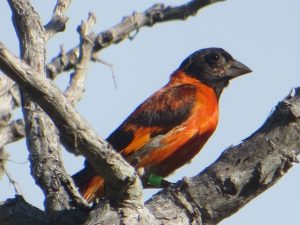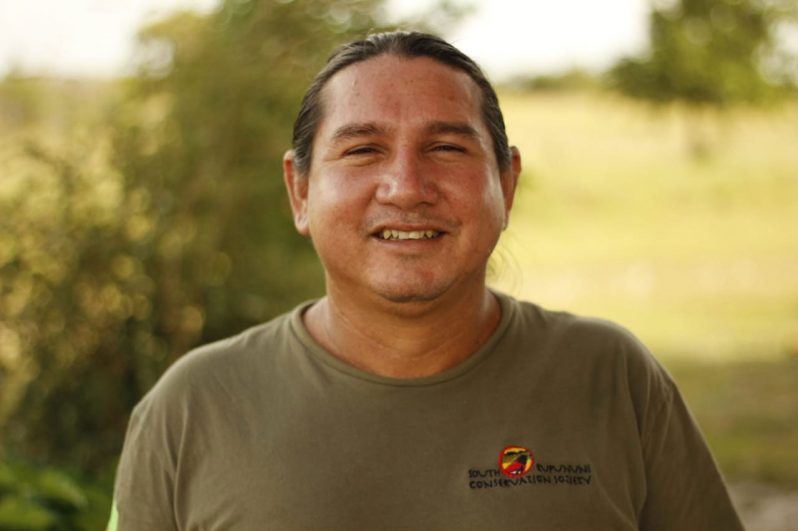THE National Geographic Society (NGS) has agreed to fund a two-year project by the South Rupununi Conservation Society (SRCS) that will help to mitigate threats to the Red Siskin and aid the increase of their population.

Last October, President of the SRCS, Leroy Ignacio, applied to National Geographic, a world-renowned and highly esteemed scientific and educational organisation, with a proposal under the ‘Species Recovery Grant.’ The proposal cited a project by SRCS called, “Implementing a Community Based Conservation Management Zone to protect the Red Siskin in the South Rupununi, Guyana.” With approval now granted, the funding will go towards monitoring a community zone that will aid in protection of the Red Siskin.
With a decreasing population globally, the Red Siskin is listed as ‘Endangered’ and has already made its way on the International Union for Conservation of Nature (IUCN) Red List. The project, being rolled out by the SRCS, will see the boundaries and rules of the zone being designed and selected by the local communities found in the Red Siskin range, which are the Shulinab, Potarinau, Sand Creek, Rupunau, Katoonarib and Sawariwau Villages.

The zone will then be monitored by SRCS rangers from the same villages, who will be trained how to properly monitor the region involved, resolve conflicts and communicate with the communities.
“We are really happy. SRCS was officially founded in 2002 and after two decades, we are glad to again be taking a positive step to protect the Red Siskin,” Ignacio told the Sunday Chronicle, adding, “The NGS is an incredible and globally well-known organization, so we are delighted to be able to receive funding from them. It is also great for the Red Siskin as although we have been working to protect the species for the past 20 years, the bird is still under threat from trapping and habitat destruction.”

The SRCS is hoping that the Community Conservation Zone will be the starting point for the protection of other threatened species, including the Giant Anteater, Giant Armadillo and others. Along the way, such projects would allow for the professional development of the SRCS rangers.
“We also hope that the project will bring even more international attention to the Red Siskin and continue to act as a tourist attraction for Guyana,” Ignacio commented. The SRCS wants to be able to successfully complete this project so that it may be able to secure more opportunities with National Geographic in the future.
“I am delighted that I can now officially call myself a ‘National Geographic Explorer.’ National Geographic is perhaps the most famous wildlife organisation in the world, so it is a real privilege to receive funding from them,” Ignacio expressed.
While he will be the principal investigator for the project, other team members include Programme Coordinator, Neal Millar; Technical Adviser from the USA, Brian O’Shea; Eian Gray and Erin Earl. There is also the team of more than 20 Red Siskin rangers from the six communities. The Sustainable Wildlife Management – Programme Guyana will also be supporting the project.





.jpg)








